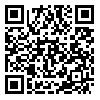Volume 24, Issue 1 (Spring 2023)
jrehab 2023, 24(1): 42-55 |
Back to browse issues page
Download citation:
BibTeX | RIS | EndNote | Medlars | ProCite | Reference Manager | RefWorks
Send citation to:



BibTeX | RIS | EndNote | Medlars | ProCite | Reference Manager | RefWorks
Send citation to:
Mashaherifard M B, Motififard M, taheri N. The Effect of Knee Joint Muscles Deep Dry Needling on Pain and Function in Patients After Total Knee Arthroplasty. jrehab 2023; 24 (1) :42-55
URL: http://rehabilitationj.uswr.ac.ir/article-1-2799-en.html
URL: http://rehabilitationj.uswr.ac.ir/article-1-2799-en.html
1- Department of Physical Therapy, School of Rehabilitation Sciences, Isfahan University of Medical Sciences, Isfahan, Iran., 1038 roknedoleh ave. bozorgmehr str. esfahan
2- Department of Orthopedic Surgery, School of Medicine, Isfahan University of Medical Sciences, Isfahan, Iran., Department of orthopedy, Faculty of medical, ,Isfahan medical university,Isfahan, Iran.
3- Department of Physical Therapy, School of Rehabilitation Sciences, Isfahan University of Medical Sciences, Isfahan, Iran. ,n_taheri@rehab.mui.ac.ir
2- Department of Orthopedic Surgery, School of Medicine, Isfahan University of Medical Sciences, Isfahan, Iran., Department of orthopedy, Faculty of medical, ,Isfahan medical university,Isfahan, Iran.
3- Department of Physical Therapy, School of Rehabilitation Sciences, Isfahan University of Medical Sciences, Isfahan, Iran. ,
Abstract: (4644 Views)
Objective Osteoarthritis is one of the most common knee joint diseases. It is a multifactorial, inflammatory, and destructive disorder of the joint that involves the synovial tissues and joint cartilage and causes permanent pain, functional limitations, and a decrease in patients’ quality of life (QoL). In advanced cases of the disease, total knee arthroplasty is performed to reduce pain and improve the function of the patients. The presence of pain after this surgery is a major concern that reduces the QoL of these people. One of the causes of pain after surgery is extra-articular pain and involvement of the musculoskeletal system, the most common cause of which is pain caused by active trigger points. Dry needling is one way to deactivate trigger points. This study aimed to investigate the effects of dry needling on the pain intensity and function of patients with active trigger points in the muscles around the knee after total knee arthroplasty.
Materials & Methods This research was a before-and-after clinical trial study. In this study, 49 patients aged 55 to 80 years, with at least 3 months past their total knee arthroplasty and still having pain, were included by an orthopedic specialist after reviewing the inclusion and exclusion criteria. After the first researcher considered the inclusion and exclusion criteria and the presence of active trigger points in the muscles around the knee, including the quadriceps, hamstring, and gastrocsoleus, 27 patients were qualified. The amount of pain in these patients before, one week, and one month, after dry needling was measured and compared based on the linear visual analog scale. Also, the performance of the patients was assessed based on the knee injury and osteoarthritis outcome score questionnaire. This study aimed to investigate the short-term effects of dry needling on pain intensity and function of patients with active trigger points in the muscles around the knee after total knee arthroplasty.
Results The results of this study show a significant difference (P<0.001) between the amount of pain before dry needling (57.2±8.9) and one week after dry needling (10.8±33.6). Also, there is a significant (P<0.006) difference between the performance of patients before dry needling (47.5±11.9) and one week after dry needling (42.3±10.6). No significant difference was observed regarding pain and performance between one week and one month after dry needling.
Conclusion Performing one dry needling session on the active trigger points of the muscles around the knee after total knee arthroplasty reduces pain and improves patients’ performance.
Materials & Methods This research was a before-and-after clinical trial study. In this study, 49 patients aged 55 to 80 years, with at least 3 months past their total knee arthroplasty and still having pain, were included by an orthopedic specialist after reviewing the inclusion and exclusion criteria. After the first researcher considered the inclusion and exclusion criteria and the presence of active trigger points in the muscles around the knee, including the quadriceps, hamstring, and gastrocsoleus, 27 patients were qualified. The amount of pain in these patients before, one week, and one month, after dry needling was measured and compared based on the linear visual analog scale. Also, the performance of the patients was assessed based on the knee injury and osteoarthritis outcome score questionnaire. This study aimed to investigate the short-term effects of dry needling on pain intensity and function of patients with active trigger points in the muscles around the knee after total knee arthroplasty.
Results The results of this study show a significant difference (P<0.001) between the amount of pain before dry needling (57.2±8.9) and one week after dry needling (10.8±33.6). Also, there is a significant (P<0.006) difference between the performance of patients before dry needling (47.5±11.9) and one week after dry needling (42.3±10.6). No significant difference was observed regarding pain and performance between one week and one month after dry needling.
Conclusion Performing one dry needling session on the active trigger points of the muscles around the knee after total knee arthroplasty reduces pain and improves patients’ performance.
Type of Study: Original |
Subject:
Physical Therapy
Received: 23/06/2020 | Accepted: 19/10/2022 | Published: 1/01/2023
Received: 23/06/2020 | Accepted: 19/10/2022 | Published: 1/01/2023
Send email to the article author
| Rights and permissions | |
 |
This work is licensed under a Creative Commons Attribution-NonCommercial 4.0 International License. |








